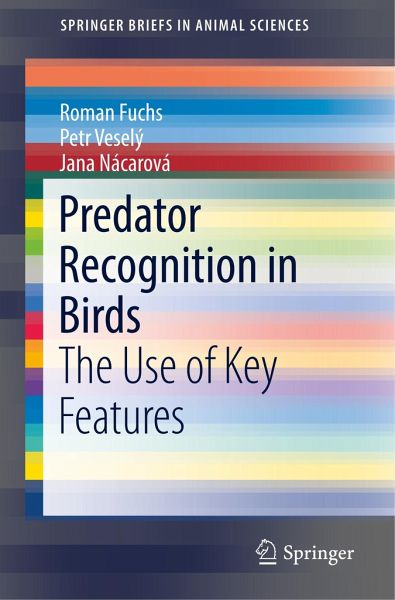
Predator Recognition in Birds
The Use of Key Features

PAYBACK Punkte
19 °P sammeln!
This SpringerBrief answers the question on how birds recognize their predators using multidisciplinary approaches and outlines paths of the future research of predator recognition. A special focus is put on the role of key features to discriminate against predators and non-predators. The first part of the book provides a comprehensive review of the mechanisms of predator recognition based on classical ethological studies in untrained birds. The second part introduces a new view on the topic treating theories of cognitive ethology. This approach involves examination of conditioned domestic pige...
This SpringerBrief answers the question on how birds recognize their predators using multidisciplinary approaches and outlines paths of the future research of predator recognition. A special focus is put on the role of key features to discriminate against predators and non-predators. The first part of the book provides a comprehensive review of the mechanisms of predator recognition based on classical ethological studies in untrained birds. The second part introduces a new view on the topic treating theories of cognitive ethology. This approach involves examination of conditioned domestic pigeons and highlights the actual abilities of birds to recognize and categorize.














